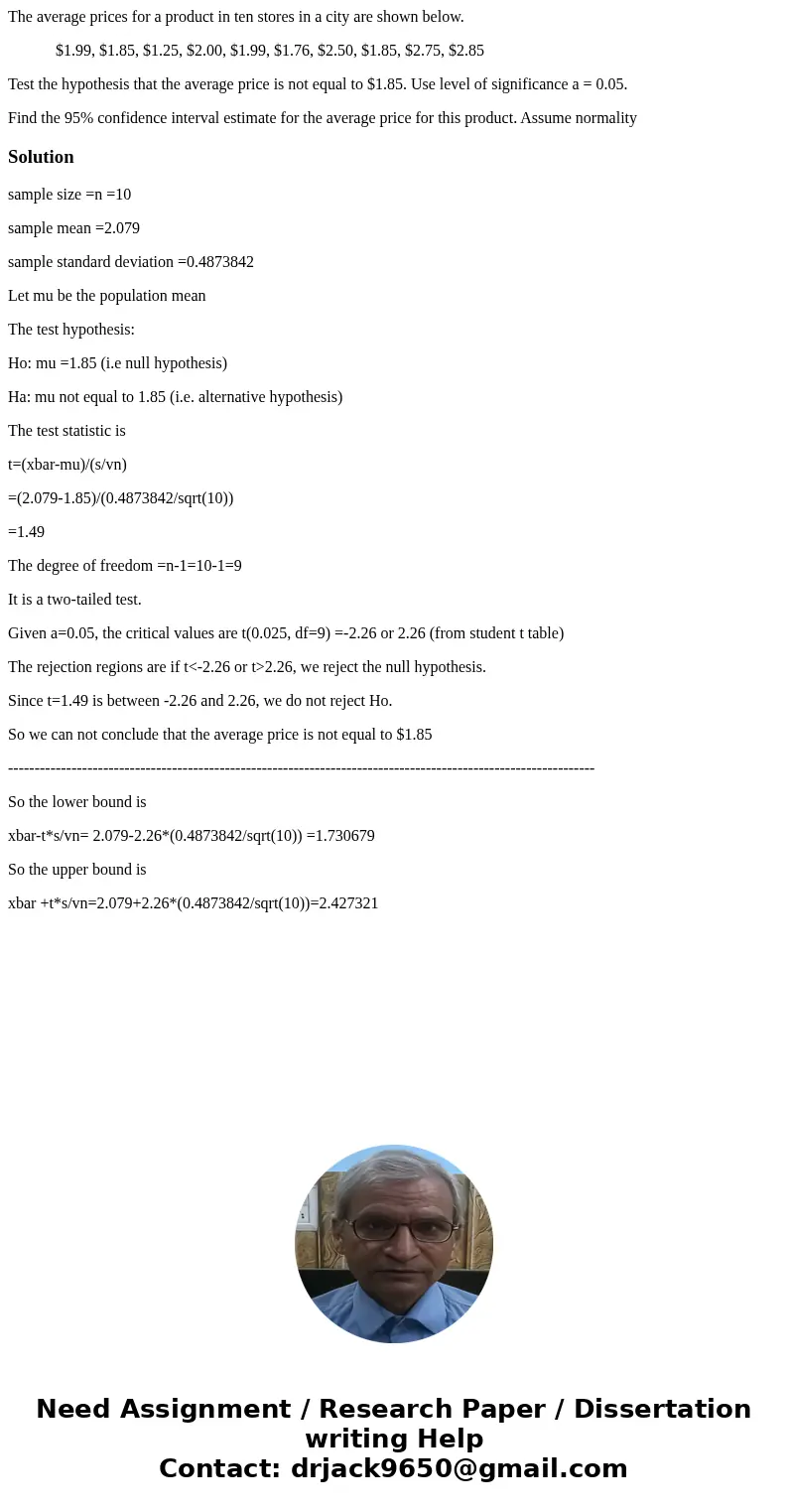The average prices for a product in ten stores in a city are
The average prices for a product in ten stores in a city are shown below.
$1.99, $1.85, $1.25, $2.00, $1.99, $1.76, $2.50, $1.85, $2.75, $2.85
Test the hypothesis that the average price is not equal to $1.85. Use level of significance a = 0.05.
Find the 95% confidence interval estimate for the average price for this product. Assume normality
Solution
sample size =n =10
sample mean =2.079
sample standard deviation =0.4873842
Let mu be the population mean
The test hypothesis:
Ho: mu =1.85 (i.e null hypothesis)
Ha: mu not equal to 1.85 (i.e. alternative hypothesis)
The test statistic is
t=(xbar-mu)/(s/vn)
=(2.079-1.85)/(0.4873842/sqrt(10))
=1.49
The degree of freedom =n-1=10-1=9
It is a two-tailed test.
Given a=0.05, the critical values are t(0.025, df=9) =-2.26 or 2.26 (from student t table)
The rejection regions are if t<-2.26 or t>2.26, we reject the null hypothesis.
Since t=1.49 is between -2.26 and 2.26, we do not reject Ho.
So we can not conclude that the average price is not equal to $1.85
---------------------------------------------------------------------------------------------------------------
So the lower bound is
xbar-t*s/vn= 2.079-2.26*(0.4873842/sqrt(10)) =1.730679
So the upper bound is
xbar +t*s/vn=2.079+2.26*(0.4873842/sqrt(10))=2.427321

 Homework Sourse
Homework Sourse